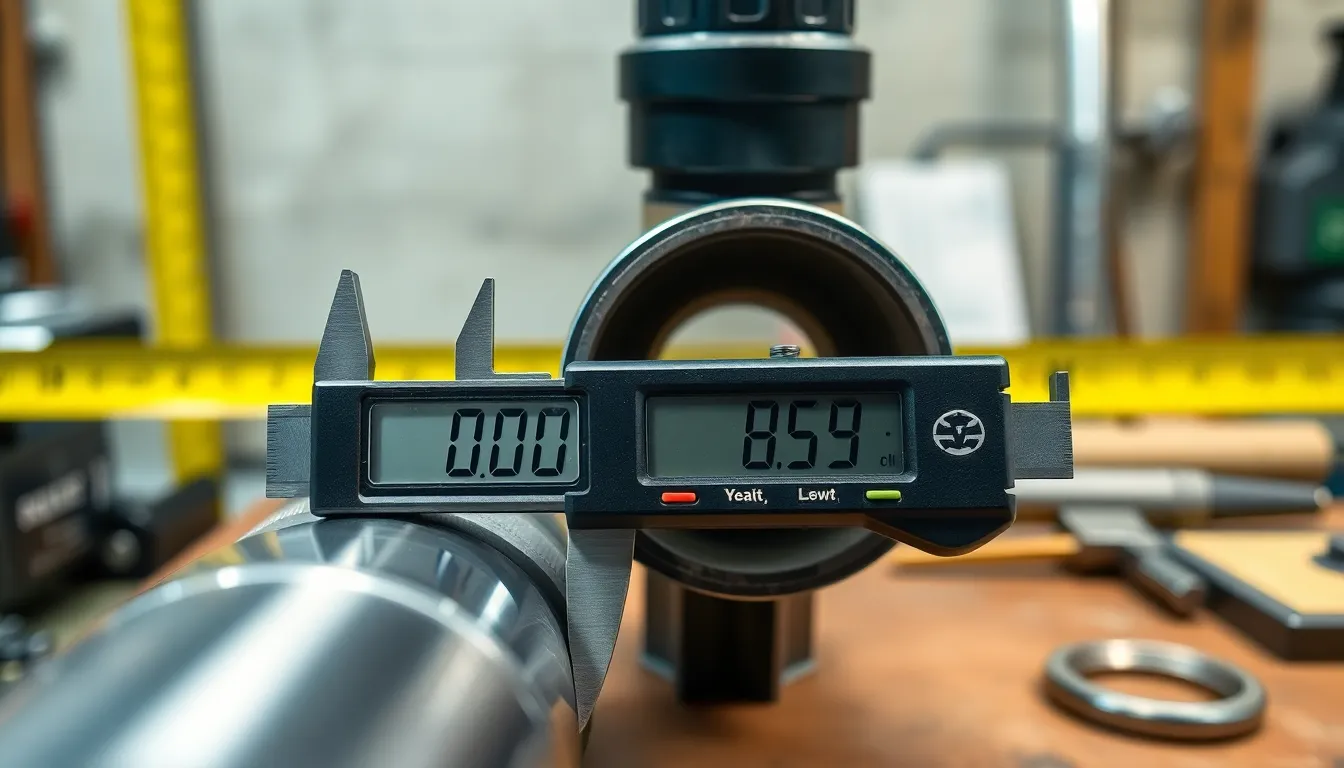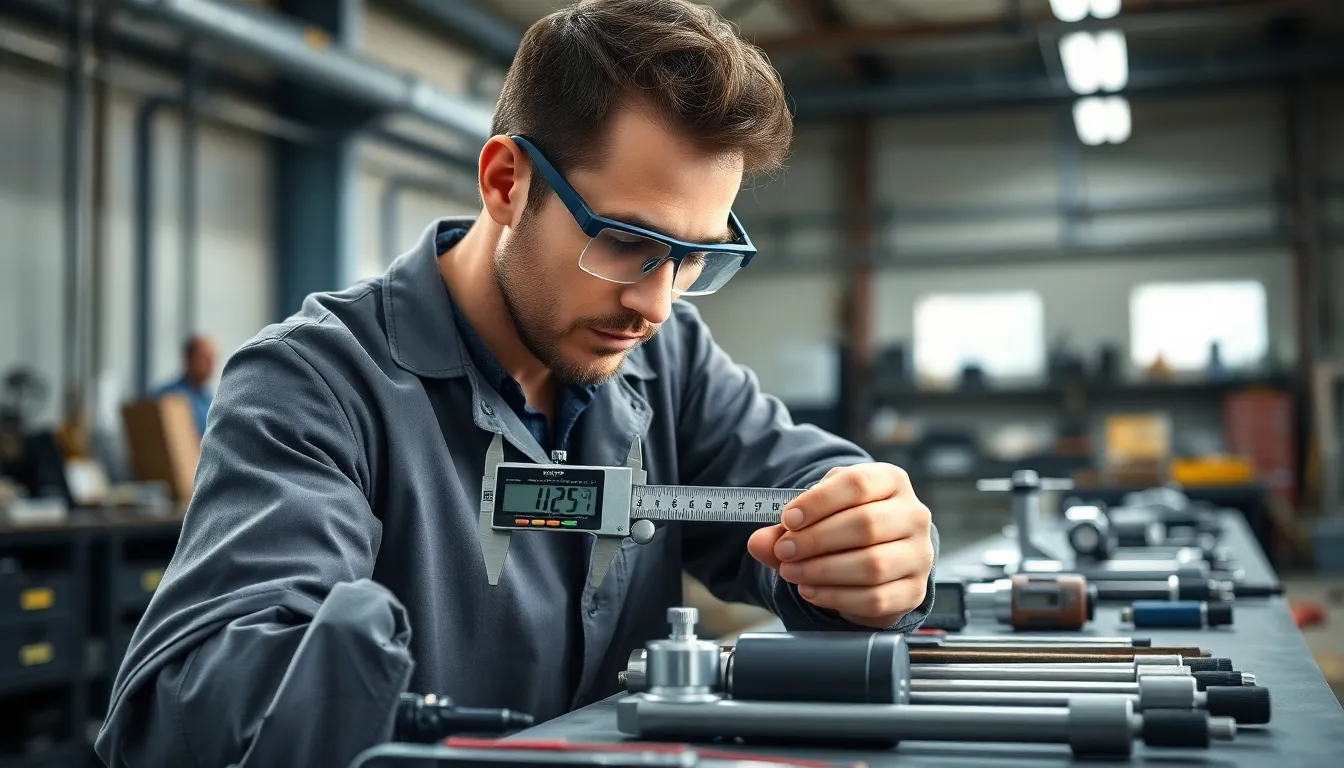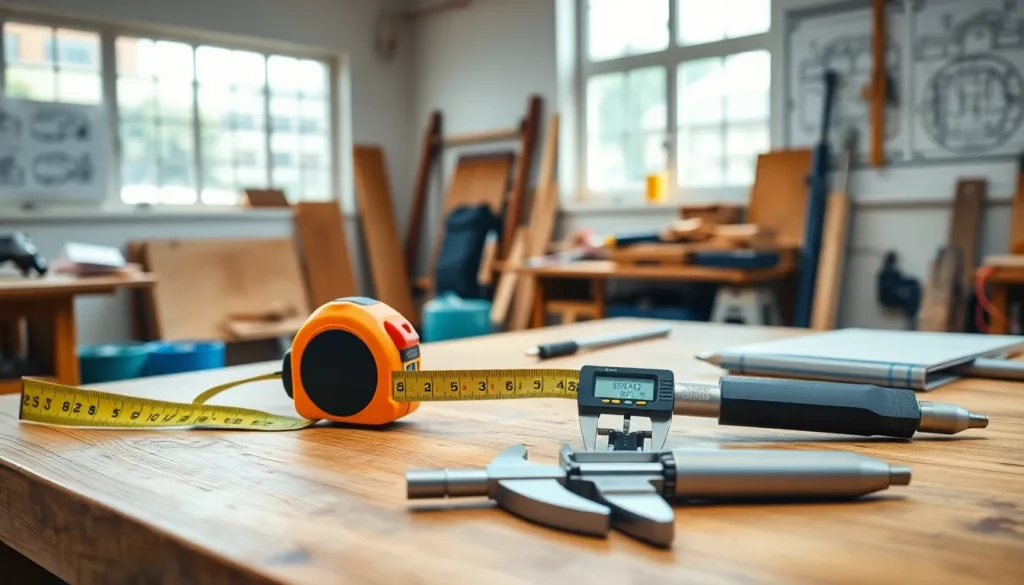Measuring diameter might sound like a task for the mathletes, but it’s crucial in countless fields, from engineering to baking that perfect pie. Whether it’s a pipe, a tree trunk, or that elusive donut, getting the right measurement can save time, money, and maybe even a few friendships. Who knew that a simple measurement could be the key to avoiding a “too-small” pizza disaster?
Table of Contents
ToggleOverview of Tools for Measuring Diameter
Various tools exist for measuring diameter accurately across different fields. Calipers provide precision in measuring small to medium-sized objects. Micrometers excel in measuring tight tolerances, proving invaluable in engineering applications. Tape measures offer flexibility when measuring larger diameters, such as pipes or circular objects.
Digital calipers feature LCD displays that enhance usability, simplifying the reading of measurements. Verner calipers allow users to gauge both inside and outside diameters efficiently. Laser diameter measuring devices offer accuracy in situations where traditional tools may be impractical, such as assessing the diameter of moving objects.
Gauges, like hole gauges, excel at determining the diameter of holes or openings, providing accurate and quick measurements. Specialty tools like roundness gauges measure roundness as well as diameter, which proves crucial in quality control processes. Each tool suits specific needs, optimizing measurement approaches.
In baking, tools like diameter rulers are essential for evaluating the size of cakes and pizzas, ensuring optimal results in culinary endeavors. Precision varies depending on the tool. Digital tools provide the highest accuracy, while analog options remain effective for everyday use.
Calibration of tools is vital for maintaining measurement precision, ensuring reliability in results. Regular checks enhance the longevity and effectiveness of these instruments. Selecting appropriate tools depends on the required accuracy, measurement environment, and object size, paving the way for effective and efficient diameter measurement.
Types of Tools for Measuring Diameter

Measuring diameter requires specific tools tailored for various applications, ensuring accuracy across different environments and object sizes.
Digital Calipers
Digital calipers provide precise measurements for small to medium-sized objects. They feature easy-to-read digital displays that enhance usability and reduce human error. Users appreciate the flexibility of switching between metric and imperial units. Calibration options ensure consistency, making them reliable in precise fields like engineering and woodworking. Availability in multiple sizes and styles allows for versatility in various tasks.
Micrometers
Micrometers excel in measuring tight tolerances, commonly used in engineering and mechanical settings. Their screw mechanism enables accurate readings down to thousandths of an inch or millimeters. Essential for parts requiring precision, they accommodate small dimensions effectively. Digital versions offer convenient displays while manual counterparts provide tactile feedback. Selecting the appropriate micrometer type, such as outside, inside, or depth micrometers, depends on the specific measurement needs.
Tape Measures
Tape measures serve to measure larger diameters, commonly applied in construction and plumbing. They come in both metal and cloth options, providing flexibility for different types of projects. Users benefit from retractable designs, facilitating easy storage and transport. Many models include markings for both imperial and metric measurements, catering to a wide audience. For measuring large objects like pipes or trees, tape measures deliver accuracy and convenience.
Applications of Diameter Measurement Tools
Diameter measurement tools serve critical functions across various fields. They enhance accuracy and efficiency in numerous applications.
Industrial Usage
In industrial settings, diameter measurement tools ensure components fit precisely. Engineers rely on tools like calipers and micrometers to maintain tight tolerances on mechanical parts. A miscalculation can lead to assembly issues, impacting production. Companies also utilize these tools for quality control, guaranteeing that products meet specified dimensions. For large-scale manufacturing, tape measures become indispensable for measuring pipes and other bulk materials. This precision impacts not only safety but also operational efficiency.
Educational Purposes
Diameter measurement tools play a significant role in educational environments. Students learn fundamental principles in geometry and engineering through hands-on experience. Tools such as calipers and micrometers introduce concepts of measurement accuracy and device calibration. Teachers use diameter measurement to demonstrate real-world applications in science and mathematics. Practical exercises give students a deeper understanding and reinforce learning. This experiential learning approach fosters skills applicable in various careers.
DIY Projects
In DIY projects, diameter measurement tools enhance creativity and accuracy. Hobbyists and craftsmen often utilize tape measures for woodworking and home repairs. Calipers become essential for detailed measurements in smaller projects, like model building. Clear measurements prevent costly mistakes and enable better results. People also find digital options helpful; they simplify readings for various materials and shapes. Mastering these tools can transform an ambitious idea into a precise, tangible outcome.
Choosing the Right Tool for Your Needs
Selecting the appropriate tool for measuring diameter hinges on understanding accuracy requirements and budget constraints. Evaluating both aspects ensures effective measurement.
Accuracy and Precision Considerations
Accuracy matters significantly when measuring diameter. Tools like calipers and micrometers provide options for precise measurements in various applications. Calipers suit many small to medium-sized objects, while micrometers excel in tight tolerances. Digital versions of calipers enhance usability with clear displays. For projects demanding utmost precision, micrometers are invaluable; they measure with higher consistency. It’s vital to verify calibration regularly as it maintains measurement fidelity. In environments where precision is non-negotiable, choosing the right tool becomes crucial.
Budget-Friendly Options
Affordability remains a common concern when selecting measuring tools. Many reliable options exist that deliver quality without breaking the bank. Tape measures typically cost less and serve basic needs effectively. Digital calipers offer user-friendly features at reasonable prices, and they’re perfect for many DIY enthusiasts. Micrometers are also available in cost-effective ranges, ensuring accuracy remains accessible. Second-hand tools can provide quality solutions while venturing into measurable savings. Investing in budget-friendly tools can enhance creativity while maintaining functionality in various projects.
Accurate diameter measurement is essential across various fields from engineering to DIY projects. The right tools not only enhance precision but also improve overall outcomes. Whether using calipers micrometers or tape measures the choice of tool can significantly impact the quality of work.
Investing in reliable measuring instruments ensures that projects meet the necessary specifications while also saving time and resources. Regular calibration is key to maintaining accuracy and reliability. With the right approach to diameter measurement individuals and professionals alike can achieve their goals with confidence.










